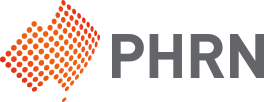The Sax Institute's 45 and Up Study is the largest cohort study of healthy ageing in Australia, established as a national resource to enable world-class clinical, public health and health services research. More than 250,000 men and women aged 45 and over across NSW - about 10% of this age group - were recruited to the 45 and Up Study and will have their health followed over the coming decades.
Its large size gives the Study power to answer research questions quickly and it can address a diverse range of queries, even those relating to uncommon conditions and small population groups. Increased participation from certain groups, such as rural participants and those over 85, has been achieved by oversampling.
The Sax Institute actively encourages the use of the resource by individuals or groups provided ethical and scientific quality criteria are met.
The 45 and Up Study data dictionaries and application forms can be found at the 45 and Up Study site.
Please note, access to the 45 and Up Study data linked to other NSW data collections requires an application to both the CHeReL and the 45 and Up Study team. Data may only be accessed via the Secure Unified Research Environment (SURE). For more information or to discuss further, please contact us.
 New South Wales Health
New South Wales Health



